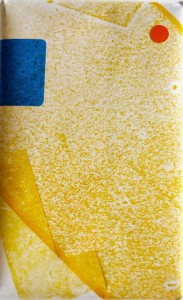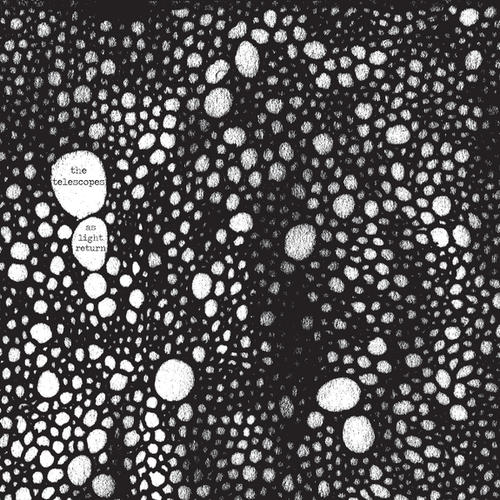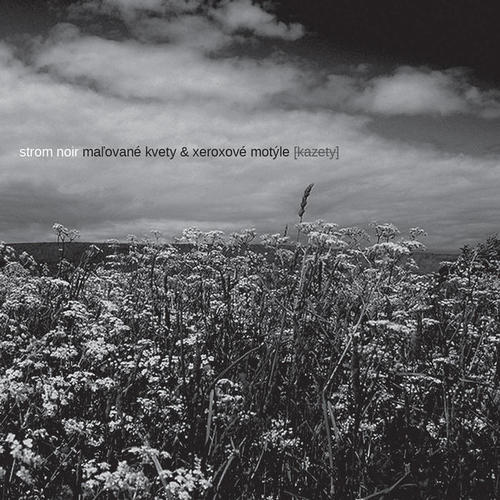 On this beguiling collaboration between Craig Tattersall, of The Boats/Remote Viewer and Thomas Shrubsole (Sub Loam, Jesus On Mars), the pair rouse the question what it means to be free. In doing so, they show us that this freedom is alive and well in the musical underground.
On this beguiling collaboration between Craig Tattersall, of The Boats/Remote Viewer and Thomas Shrubsole (Sub Loam, Jesus On Mars), the pair rouse the question what it means to be free. In doing so, they show us that this freedom is alive and well in the musical underground.
For much of music’s recorded history, i.e. the history of western civilization, the tendency has been to further the musical vocabulary — introducing strange dissonances and alien harmonies, to create a vast and intricate emotional language — and to break down the rules of the generations that came before. This was all towards the goal of total expression and honesty, freed from the constraints of polite society and their expectations, dismantling conventions and formulae.
This tendency greatly accelerated during the twentieth century, like most things. Musicians challenged the idea that music had to develop or “do anything”, or whether it was okay simply to exist, as eastern musics and philosophies infiltrated the consciousness, resulting in new/old forms like drone and minimalism. Classical music abandoned the harmonic gesture entirely, becoming a blitzkrieg of angry mechanical hornets, like in the works of Penderecki, Ligeti or Stravinsky. Jazz took this in even further, leaving the listener to wonder if this was even music that they were hearing, like with the fireball catharsis of Coltrane, Albert Ayler, Sun Ra and on and on. Noise music would lead to the exact same questions, forcing people to even re-evaluate how they approach the sonic ecosystem around them.With the proliferation of information technology, and perhaps a little before, this futurism imploded as we all became inundated with too many far-out sounds. Free jazz and spastic noise became passé, although still being explored by devoted practitioners in mildewy, glittered basements and frou frou art galleries, as they most likely always will be. “Neoclassical” music often sounds like sedate and respectable out-takes from a John Williams score, or else a college student with a laptop and a bassoon, exploring the possibilities of real-time sonic manipulations, which was far out and avant-garde 20 years ago. It seems that the spectre of “been there, done that” ennui haunts every medium.
Which is unfortunate, as it suggests that all we have left is to refine the scraps of the past, creating new junk sculptures out of yesterday’s treasures. This admits defeat, that there are no horizons, no new dreams or intoxicating visions.
Thankfully, the underground doesn’t think or work this way. Small-run boutique labels, like Other Ideas, that this tangerine C60 came out on, pioneer and champion their niches. I’m sure that saxophones and oscillators, tape loops and contact mics have not entirely run out of configurations, and devotees are there to capture the magick, and dish it out, in editions of 100. This “free-form smudge and grind session,” as Boomkat puts it, was hatched during a studio hibernation in 2012 and early 2013. Tattersall and Shrubsole ping-ponged between analogue synths, reel-to-reel tape recorders and “esoteric sound-producing devices”. These recordings were then mashed down by Andrew Hargreaves, also from The Boats, into a 60-minute transmission of dream logic and static hum.The reason for the long preamble is it’s possible to hear traces of free jazz, drone, electroacoustics and noise during the duration. The A-side is the plonkier of the two, sounding like Derek Bailey or Sonny Sharrock getting together with Masonna and Wolf Eyes. These string iterations erupt from a primordial soup of pink-and-green noise, and sink just as quickly. There’s a bit of rumble and scrape that sounds like a tape recorder being rubbed on a steel string guitar, and at times, it’s possible to almost hear a beat (but not for long).
The Kandinsky-like cover art is a great framework to understand this cassette: squiggles and lines free-float, sometimes coming together to form a pattern, at other times chillin’ in zero gravity. Similarly, the music comes together, sometimes, to almost form a melody, but it’s almost accident, or incidental, and it doesn’t matter much when it does. This is music of fleeting impressions, like a soundtrack for entoptic phenomena. The B-side is the amorphous angle, with no real lines, although plenty of pulses, sine waves and zapping squiggles. It’s a pretty legit harsh noise document, except this squall isn’t packaged in gray, white and black fidelity. These drones are colourful, like looking through an oil-slicked surface, while bio-luminescent koi fish swim contentedly below the surface.That’s the most useful aspect of this tape, if we were to measure art on its usefulness. It has the same uncompromising, visionary formlessness of noise music, but it is not so abrasive. Call it “masterful noise.” These polychromatic tones and textures wouldn’t turn off a fan of ambient or synth records, although the casual passer-by probably wouldn’t call this “music”. But, by the definition of “organised sound,” it definitely is. It’s well-organised, even; Hargreaves did a bang-up job on the sequencing.
Although the label sent me digital files, for delectation I opted to wait until I could get my cassette recorder working to properly delve into these glowing waters. The orange cassette tape was just too irresistible. And I’m glad I did. The tape hiss, inherent to the medium, helped to tie the whole thing together, and the long-playing, continuous nature of the format lends itself to listening to the whole thing. I think to digest this album in chunks would be to miss some of the point. This document served as my companion on several errands, turning my commutes and per-ambles into strange industrial musique concrète dreamscapes, and making my life a more colorful and visionary place. Also, tape saturates and distorts better than any other recording medium, giving these mid-to-trebly blasts a particularly delicious, blown out quality.It could be the soundtrack for a late ’60s aquatic documentary, or an electroacoustic scribble about the dream life of a motherboard. Or it could be anything at all. This music is free, and so are you; free to draw your conclusions, and choose your own symbolism.
-J Simpson-



